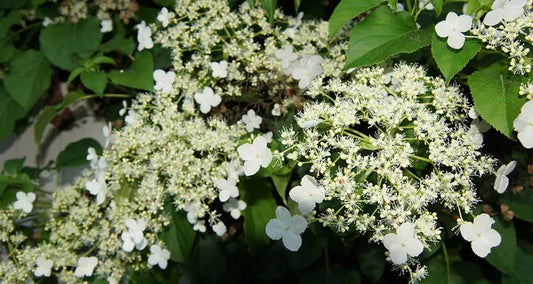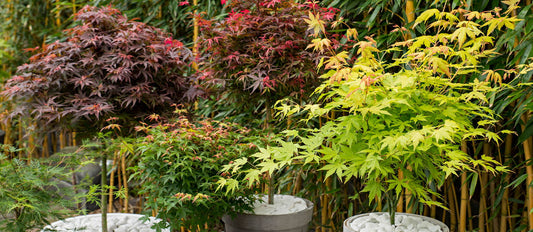Did you know that regular pruning and thinning of water plants is an essential element of good pond maintenance? In the autumn you will want to prevent the pond from filling up with leaves and stems. It is also important to keep your pond healthy and this is done by cutting back your oxygenating plants so that they can continue to grow. Find out here which pond plants need to be pruned and when is the best time to do the work.
Oxygenating plants
Oxygenating plants are the most important plants in your pond. As the name suggests, they release oxygen into the water, and this in turn allows micro-organisms to live in the pond. Furthermore, oxygenating plants also limit the formation of algae by absorbing nutrients from the water and keeping the water clear. It is therefore essential that these plants remain healthy. The plants will thrive all the while they can continue to grow. Growth decreases once the stems protrude above the surface of the water. At this point, the energy is no longer being directed to the growth of the plant itself but to the development of the flowers. You actually want to avoid this, because it reduces the purifying function of the oxygenating plants. We therefore recommend that you prune oxygenating plants promptly as soon as they reach the surface of the water.
Things to remember when pruning oxygenating plants
- Cut oxygenating plants back to about 1/3 of their length. This can be done several times a year.
- Autumn (September/October) is the best time to cut back oxygenating plants so that they can begin to grow again in spring.
- Spring is when the growth phase begins again and the oxygenating plants will soon be back at the water's surface. At this stage, cut them back again to at least 15 cm below the surface of the water.
- You can either break off the stalks of the plants using your hands or cut them off with pond shears.
Waterside & marsh plants
The function of waterside and marsh plants in your pond is primarily decorative. They are generally used to create a natural transition at the edges of the pond. These plants resemble garden plants that you might plant in your borders, but unlike garden plants they don't mind wet roots! Just like border plants, waterside and marsh plants often finish blooming in autumn. This means that withered leaves, flowers and stems can fall into the water. If the leaves and stems do not fall into the water but instead drop onto the bank, you can leave them there until spring and then prune them. If they dangle into the water, they must be removed as soon as possible. Leaves and stems can rot, and this is bad for the water quality.
Tip!
Cut the stems back to just above the ground and remove leaves that dangle above the water. Use a pond net to remove leaves, stems and flowers that are already in the water.
Water lilies
Water lilies are considered the queen bee of the pond and are a must-have feature. They add a beautiful touch of colour to your crystal-clear pond. Like waterside plants and marsh plants, water lilies die off in autumn and must be pruned. Remove the dead leaves and flowers and make sure that rotting leaves and flowers do not remain in the water for too long.
Did you know...
Water lilies grow quickly and therefore have a lot of leaves. The leaves develop mainly during the growth and flowering period in spring. You should cut away the excess leaves so that the pond still receives sufficient sunlight and oxygen.
Dividing pond plants
It is generally a good idea to divide pond plants so that you have new and strong pond plants every year. We're here to lend a helping hand.
-
Water lilies
We recommending dividing your water lilies once every three or four years. Water lilies should be divided when the water lily flowers in your pond have grown five to ten centimetres above the water level. You divide a water lily by removing the basket in which the lily is planted from the pond bed. Remove the rhizome from the basket and cut off a good top shoot of about 15 cm. Discard the old rhizome and replant the new cutting. Place it pointing upwards in a water lily basket filled with a mixture of pond soil and loam. Place the root with its cut edge in a corner. Plant the basket again in the pond to grow a young, full-flowering water lily.
-
Oxygenating plants
Oxygenating plants are also ideal for dividing. This doesn't take much extra work because you can use the pruned stems. Select a number of healthy new shoots from the cut-off plant parts. These can be replanted in a pond basket. Read about the best way to plant pond plants here. Make sure that you divide your pond plants at the right time. Oxygenating plants can only be divided in March and April, whereas water lilies can be divided throughout the summer (June to August).




